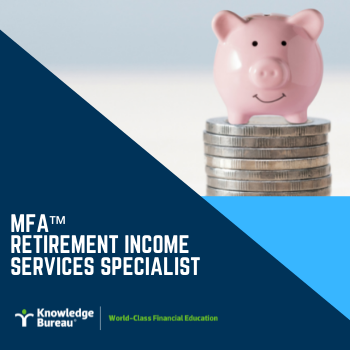Last updated: February 09 2022
Knowledge Bureau Network: Raising the CPP Survivor’s Benefit

From the desk of Evelyn Jacks
The Liberal government has proposed that the CPP survivors’ benefit be raised by 25%. It’s an important step in the right direction, but it may not be enough to fairly represent the lost contributions from a lifetime of mandatory contributions by a deceased spouse. This requires review and here’s why:
Assume both spouses have worked throughout their lifetimes, contributing to the CPP. When they retire, both will receive retirement benefits based on a percentage of their lifetime contributory earnings. However when one spouse passes away, that person’s remaining retirement benefits won’t necessarily pass over to the other spouse. It will only top up the benefits received by the spouse to his or her own monthly maximum. If the surviving spouse is already entitled to the maximum benefit, the deceased spouse’s retirement benefit is lost, except for a lump sum death benefit of $2,500.
This doesn’t seem fair. If both spouses – and their employers- contributed to CPP throughout their working lifetimes, the survivor should receive the deceased’s retirement benefits to the end  of the second spouse’s death. After all, because the CPP contributions are mandatory, net earnings for other savings opportunities are diminished. With recent increasing premiums, savings availability for the TFSA, for example, is squeezed out for many families.
of the second spouse’s death. After all, because the CPP contributions are mandatory, net earnings for other savings opportunities are diminished. With recent increasing premiums, savings availability for the TFSA, for example, is squeezed out for many families.
That’s too bad, because aside from the tax-free status, the TFSA has a better survivor’s plan. All of the remaining contributions and earnings may be transferred to the survivor, on a tax-free basis. While the CPP benefits are taxable, the TFSA is a “safe haven” account, with increasing importance in inflationary times because there is no tax risk. It allows flexibility for emergency access and then recontribution without losing the contribution room. It can help people cope with increases in nondiscretionary spending for food, clothing and shelter.
The TFSA is an ideal retirement savings alternative, as it provides an opportunity to create earnings which can grow on a completely tax-sheltered basis and later be withdrawn tax free.
To help Canadians fund their TFSA, governments could consider:
- Raising the tax-free zone (Basic Personal Amount) to better reflect the costs of non-discretionary spending.
- Freeze the costs of the CPP for households where individual incomes of each spouse are under $50,000
- Fully index the TFSA contribution room to allow for more emergency savings that keep pace with inflation
Taxpayers can also leverage their refund from an RRSP contribution and invest in the TFSA. What’s your take? Please weigh in.
Evelyn Jacks is President and CEO of Knowledge Bureau and author of 55 books on tax filing, planning and family wealth management. She tweets @evelynjacks.com

